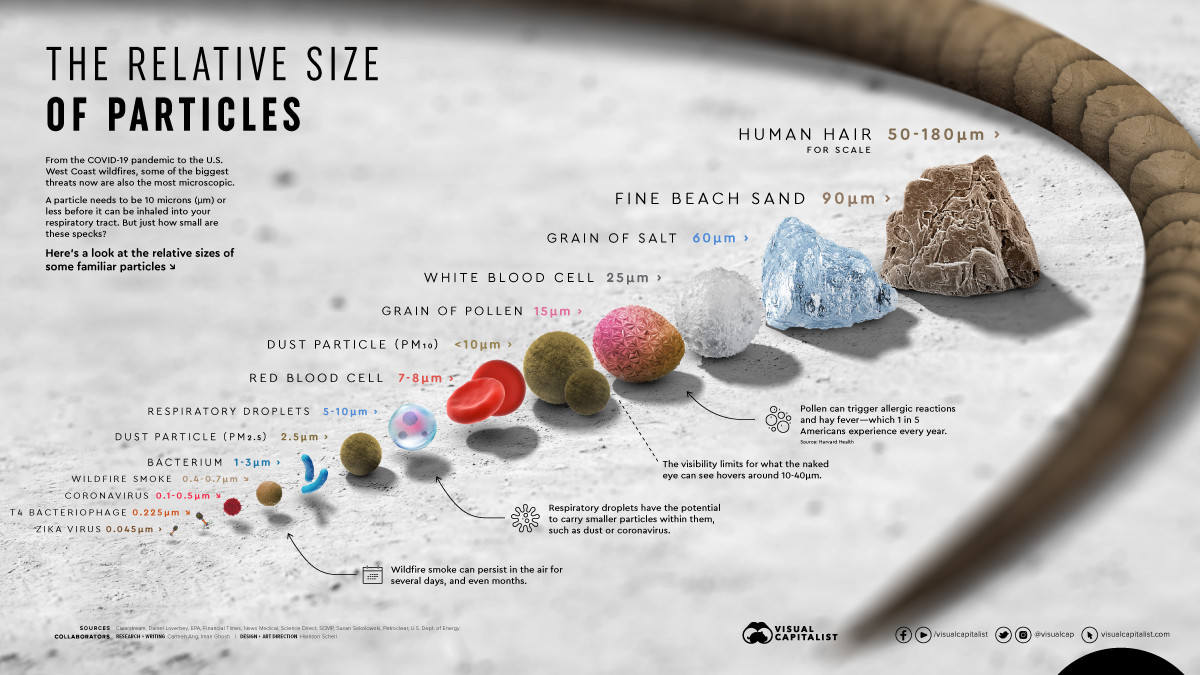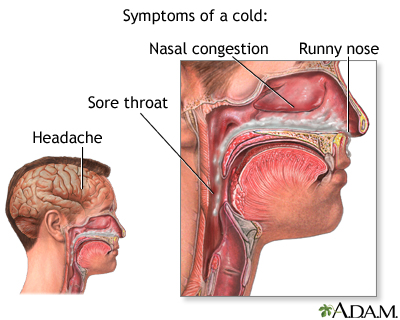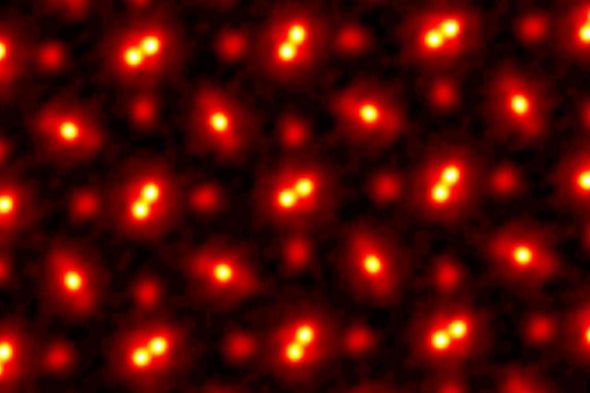Common Cold
Both doubt and certainty are contagious as the common cold.
- Kathryn Schulz
The common cold is something we all experience in our life. It is very uncomfortable and exhausting to experience this. With a reasonable amount of time spent with the common cold, we have our own remedies to treat it. In reality, we do not know what a common cold really is.
This writing will focus on understanding the common cold with the help of science, it does not give any medical advice. Simply it explains the common cold with the help of known facts. So it will provide an understanding of the common cold and help to act accordingly.
What is a virus?
"A virus is a submicroscopic infectious agent that replicates only inside the living cells of an organism".
Decoding this sentence will provide a lot of information.
The word virus is originally a Latin word that translates as a thick unpleasant liquid or simply slime. This might give some intuition in this context of the common cold, one can relate "thick unpleasant liquid " to the common cold. So, in a literal way, one can relate a virus as an "unpleasant liquid " from one's body and it is hazardous for fellow humans (This is not entirely true but in some sense it is considerable).
"Submicroscopic refers to something which can't be seen using conventional microscopes which work with a visible light source. So a virus is smaller than the wavelength of light. Which is really small.
These graphics will give a better understanding of the size of the virus compared to other particles
https://assets.weforum.org/editor/VA3n8eC_pHvbZGL13lARzzkBw7h-xyOBM4E48Mf_yjw.jpg
Infectious or infection is derived from the Latin word "infectious" which means to put in or to dye or to stain. So it is an action to put something in our case the something is a virus. In a more apt manner, infection is an invasion of some disease-causing microorganisms. So an infectious agent is something that can be quickly passed on to another person.
The virus is a confusing and interesting organism because it can only live in a living body and be pseudo-dead outside a living body. It is like some kind of superpower it can freeze itself outside a living body and can attack once it is inside a living body.
Understanding the nature of the virus
We human beings are very much capable of creating our own energy, we are not actually creating energy but we transfer energy from our surroundings like plants create their own energy to live from the sun and soil we create it using plants, animals, sun, and soil. The same applies to bacteria, insects, and other living organisms. To put forth assume what will happen if plants do not have soil, sun, and air to live can they live? The answer is no.
As mentioned earlier viruses are pseudo-dead outside the living body which means they are not capable of making energy on their own but once they find a host which can supply the energy they can then act independently.
Viruses are very intelligent they can reproduce rapidly, they and easily adapt to any environment, they can co-opt with the host and evolve easily, and they can spread easily. This might give you a very overlooked understanding of viruses but that is enough. One important note is that viruses exist since the evolution of cells.
Common cold
The common cold is a viral infection in our nose and throat simply the upper repository tract. It is the most common human disease. The technically common cold is called "Upper Respository infection (URI)". Then the question will be why it is called the common cold? It will be answered later.
In a non-technical tone, the common cold can be understood as follows. When a virus or a group of viruses come and live in the lining of the nose, throat, sinuses, and larynx. Basically when the virus chooses the upper respiratory part of our body to live and reproduce.
What does the common cold cause?
The simple answer to this question is that it causes discomfort to us. Broadly speaking it causes many things. Cough, sore throat, runny nose, sneezing, headache, and fever are some discomforts caused by a cold and this can be considered as a sign or a symptom of a cold.
What causes the common cold?
As we know the common cold is caused by viruses. There are many kinds of viruses that cause the common cold and the most dominant of them is Rhinovirus which literally means nose in greek. This type causes almost 30% to 60% of the cold along with other commonly implicated viruses including human coronaviruses, influenza viruses adenoviruses, human respiratory syncytial viruses (RSV), enteroviruses other than rhinoviruses, human parainfluenza viruses, and other 200 types. But mostly different variants of the Rhinovirus family.
It is because Rhinovirus infection increases quickly in temperatures from 33 to 35 °C, which is the average temperature found in the nose. These are one of the smallest viruses. on average, it is 30 nanometers in comparison an RBC (red blood cell) is 5000 - 8000 nanometers. Which is an advantage for Rhinovirus.
Rhinovirus along with other viruses is transmitted through various means. They spread via airborne aerosols, respiratory droplets, and contaminated surfaces, including direct person-to-person contact. The viruses may survive for prolonged periods in an environment (over 18 hours for rhinoviruses) and can be picked up by people's hands and subsequently carried to their eyes or nose where infection occurs. So as a consequence of this poor hygiene can also cause the common cold.
What "The common cold" really is?
So far we have some understanding about the common cold that is caused by viruses and other but what is the common cold really? The common cold that we experience is our body's reaction to the habitants a.k.a viruses in our body.
The common cold is caused by viruses but the thing that we experience is the reaction of our body to the virus in our body and the virus does not cause a runny nose rather it is our body's coping mechanism in a defensive mode to survive.
What actually happens
The virus has a very comfy environment inside the lining of our noses and sinus. They enter through various means.
Now after they enter and take their place our body senses something new and sends a signal to the brain about it.
The brain starts to react. First, our body makes the blood passage wider to increase blood flow. This is the reason we feel and look inflamed (Swollen and sometimes red) during cold
Next, the body releases more white blood cells (WBC) in the blood. WBC is a part of the immune system that prevents us from external and internal attacks of infections and other things. As the blood passage is widened more WBC flows in the blood and reaches the sites of attack (mainly the upper respiratory tract).
Next, our body starts to produce mucus due to the triggering of the chemical called histamine in our body. This caused the overproduction of mucus in the lining of our respiratory tract which can travel to our digestive system, sinus, mouth, and lungs. mucus is like a goo so it is sticky. This mucus can also be triggered due to fine dust (Which is a dust allergy very similar to the discomfort of the common cold). As the mucus is like a goo it traps the virus in the inner linings of the upper respiratory system.
Already the blood passage is inflamed and the overproduction of mucus will cause it to press our sinuses and this caused the headache mainly in the outer four heads. So the compression of the sinus causes headaches.
The WBC physically fights the viruses and the nucleus flushes out the virus by mouth, nose, or by digestive acids. So this causes runny nose, sneezing, cough, and vomiting. So, what we experience as the common cold is our body's reaction to the virus in our body.
Scientifically what can be done during the common cold?
As WBC is the primary defense mechanism which is made up of protein, taking protein-rich food will be useful as it boosts our immune system, during this discomfort we will also feel fatigue. Basically, protein helps us to build antibodies (like WBC) and helps to maintain strength by which the duration of the common cold might be significantly reduced.
Taking a lot of fluids without sugar because sugar triggers the production of fatty acids in livers so will cause more discomfort by causing more swelling thus it causes more problems. Including electrolytes in the fluids will help to gain strength. Taking a lot of fluids will help to keep us hydrated and keep mucus production. By taking a lot of fluids mucus can easily come out of our body.
The other scientific thing that our body does is to cough and sneeze, by which the mucus and the virus can physically come out of our body through mouth and nose. Both coughing and sneezing help to relieve the congested airway and help in releasing mucus from the body.
Taking rest helps to overcome these discomforts. Doing heavy physical work and mental work will cause more discomfort.
Myths related to the common cold
Applying Vicks during a cold can relieve clogging inside the sinus. The reality is that the odor of menthol tricks us that we are breathing through an unclogged nose. Menthol is an organic compound that produces a cooling sensation when applied on the skin that can relieve light pain. Naturally, this is found in peppermint.
Eating ice cream can cause a cold. This is not entirely true, it depends on the situation. When you are already infected by the virus eating ice cream which is essentially made up of dairy products and sugar will make the mucus thick and cause more discomfort. When you are not infected by a virus ice cream can't cause a cold.
Taking antibiotics can speed up the process of recovery. People use mild antibiotics while they have colds thinking that it will provide relief but in reality, it will do nothing because antibiotics are against bacteria they do not affect viruses.
Over-the-counter, medicines can help to get relief. It is true but always relying on these medicines to overcome the symptoms will be a bad idea in the long run because our body will become resistant to them and will produce no effect in the long run.
You can catch a cold by wet hair and spending more time in the water (at least in my home). Wet hair can't be a possible reason to catch a cold but spending time in water can cause it because water might contain viruses so it can affect us.
Why is Upper Repository infection called the common cold?
The name is common cold for the upper repository infection because this infection is mostly observed during cold weather. The reason can be justified using science.
During cold weather, the air is moist and humid so the possibility of virus trapping in the moist is high and it can persist for more time can be easily transmitted. During cold weather, people tend to stay indoors so the possibility of transmitting the virus is high because we get exposed to it for a longer period of time.
Why do children get the common cold more often?
The reason for this is that children do not have fully developed immune systems, they are in the developing stage so they experiment and react with new inhabitants like viruses and bacteria. This is the reason why children are more easily affected by the common cold. Also because of poor hygiene children catch a cold.
In the worst-case scenario, we can expect the body temperature to increase to kill those viruses and any other inhabitants and we call it a fever. The best way to overcome this is to take rest, have hot tea, sleep well, have more fluids, and eat light food and protein-rich food. Even taking a hot bath will help with the symptoms of the common cold.
Cure for the common cold
As it is mentioned earlier the virus are intelligent pseudo-living beings. They evolve in every possible environment so any medication that we give to fight it will actually help in the evolution of the virus we can not cure a common cold but can prevent it by having a proper diet to have a good immune system and good hygiene.
For better understanding, you can watch the video by TedEdu https://www.youtube.com/watch?v=LsqCA50d7BM




:max_bytes(150000):strip_icc()/cold-flu-causes-4689139_animate_1-9edb7c6970c24e12a5809ae7c040e270.gif)






































